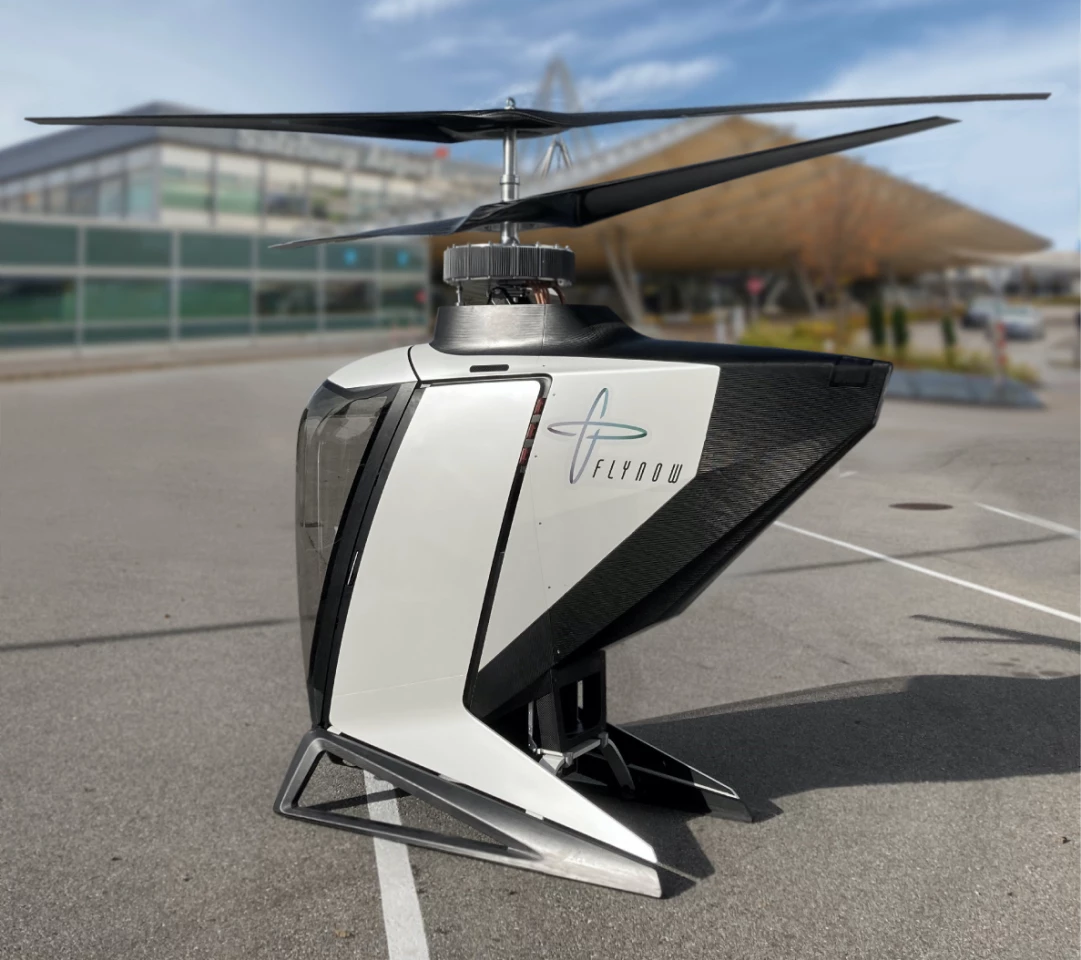There are now a number of companies working on eVTOL (electric vertical takeoff and landing) "air taxis," most of which look a bit like larger versions of consumer quadcopter drones. The eCopter is different, however, in a way that could make it more likely to see real-world use.
Currently being developed by Austrian startup FlyNow Aviation, the auto-piloted eCopter features a coaxial electric drivetrain which incorporates two counter-rotating rotor propellers (one above the other).
This setup allows it to be classified by the European Union Aviation Safety Agency as an electric helicopter. According to FlyNow, because the eCopter can be nicely slotted into this existing classification, certification should be much quicker and simpler than would be the case for more drone-like multi-rotor air taxis.
Additionally, the coaxial drivetrain contains fewer moving parts and just less hardware in general, reducing weight, materials costs and complexity. As a result, as compared to most other air taxis, the eCopter should reportedly be less expensive to build, buy and use, plus it should also have a better battery range.

FlyNow plans on offering one-and two-passenger versions of the aircraft, along with a cargo model.
All three will be made by adapting one base airframe, meaning that they won't each have to be designed or built from scratch – again, that should keep costs down. Ultimately, it is hoped that "cab fare" for the aircraft won't be much different from what users would pay in a ground taxi traveling between the same two points.
While FlyNow doesn't have a flying prototype yet, it has successfully conducted ground tests on a fully equipped full-scale proof-of-concept model. The company estimates that all three versions of the eCopter should ultimately have a flight/battery range of up to 50 km (31 miles), a cruising speed of 130 km/h (81 mph) and a maximum payload capacity of 200 kg (441 lb).

FlyNow CEO Jürgen Greil tells us that commercial production of the eCopter is planned to begin in 2026. The cargo model will be made first – as it should be easier to license – followed by a rollout of the passenger versions. We're told that the company is currently in discussion with potential commercial partners, who may utilize the aircraft in their air taxi or air cargo operations.
The eCopter concept is outlined in the following video.
Source: FlyNow Aviation





